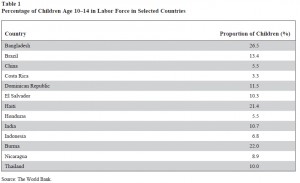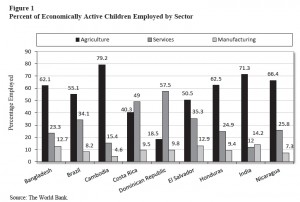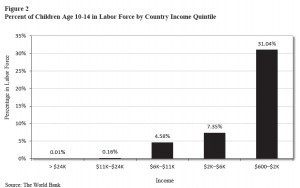The Misogynist Origins of American Labor Law
美国劳动法的仇女起源
作者:Jeffrey Tucker @ 2016-02-17
译者:混乱阈值(@混乱阈值)
校对:鳗鱼禅(@鳗鱼禅)
来源:FEE,
https://fee.org/articles/government-s-war-on-women-1900-1920/
Many now credit government for past progress in gender equality, mostly because of late 20th-century legislation that appeared to benefit women in the workplace. This is a distorted view. Few know that government at all levels actually sought to prevent that progress.
如今许多人把过去在性别平等上的进步归功于政府,主要是因为二十世纪后期的立法看似让职业女性受益。然而这个观点与现实不符。鲜为人知的是,各个层级的政府都曾企图阻挠这种进步。
A century ago, just as markets were attracting women to professional life, government regulation in the United States specifically targeted women to restrict their professional choices. The regulations were designed to drive them out of offices and factories and back into their homes — for their own good and the good of their families, their communities, and the future of the race.
一个世纪前,正当市场吸引女性进入职场之际,美国的政府管制刻意将女性作为目标人群,限制她们的职业选择。这些管制措施的目的是把女性从办公室和工厂驱赶回家中——为了女性和她们家庭、社区,以及民族的未来。
The new controls — the first round of a century of interventions in the free labor market — were designed to curb the sweeping changes in economics and demographics that were taking place due to material advances in the last quarter of the 19th century. The regulations limited women’s choices so they would stop making what elites considered the wrong decisions.
这些新的控制措施——是整整一个世纪对自由劳动力市场的干涉浪潮的第一波——意在阻止由于十九世纪最后二十五年物质进步所带来的经济和人口统计上的巨大变化。管制措施限制了女性的选择,这样她们就无法做出当时社会精英眼中的“错误”决定。
The real story, which is only beginning to emerge within the academic literature, is striking. It upends prevailing narratives about the relationship between government and women’s rights. Many cornerstones of the early welfare and regulatory state were designed to hobble women’s personal liberty and economic advancement. They were not progressive but reactionary, an attempt to turn back the clock.
Women’s Work Is Not New
女性工作不是什么新鲜事
It was the freedom and opportunity realized in the latter period of the 19th century that changed everything for women workers, opening up new lines of employment.
The growth of industrial capitalism meant that women could leave the farm and move to the city. They could choose to leave home without having married — and even stay in the workforce as married women. They enjoyed more choice in education and professional life than ever before.
New clerical jobs, unknown a century earlier, were everywhere to be had.
Women’s wages were rising quickly, by an impressive 16 percent from 1890 through 1920. Nor were women working at “exploitative” wages. A Rand corporation
study of wage differentials discovered an interesting fact: women’s wages relative to men’s were higher in 1920 than they were in 1980.
新的文书类工作在那之前一个世纪还不存在,而此时已经到处都是。从1890年至1920年女性的工资快速上升,涨幅高达16%。女性的工资并非是“剥削性”的。兰德公司一项关于工资差异的研究揭示了一个有趣的事实:1920年女性工资相对于男性工资的比率要高于1980年。
The Law Intervenes
法律介入
And yet, these were also the years in which we first saw government intervention in the labor market, much of it specifically targeting women. As historian Thomas Leonard argues in his spectacular book
Illiberal Reformers (2016), an entire generation of intellectuals and politicians panicked about what this could mean for the future of humanity.
然而,在那些年政府首次开始介入劳动力市场,明确针对的目标主要是女性。正如历史学家Thomas Leonard在其力作《非自由的改革者(Illiberal Reformers)》中指出的,整整一代的知识分子和政治家恐慌于女性工资上升会给人类未来带来的影响。
Society must control reproduction and therefore what women do with their lives. So said the prevailing ideology of the age. We couldn’t have a situation in which markets enticed women to leave the control of their families and move to the city.
社会必须控制生育,因而也就必须控制女性的人生。那个时代盛行的意识形态如是说。市场引诱女性离开家庭的控制搬迁到城市,这种情况让人无法接受。
Though they are called Progressives, the reformers’ rhetoric had more in common with the “family values” movement of the 1970s and ‘80s — with pseudoscientific race paranoia playing the role that religion would later play. In many ways, they were the ultimate conservatives, attempting to roll back the tide of history made possible by the advance of the capitalist economy.
尽管他们被称为进步主义者,这些改革者的话语倒跟1970和80年代的“家庭价值观”运动有更多共同点——也包括日后宗教也运用的伪科学种族妄想狂那一套。在许多方面,这些人是终极的保守主义者,他们企图使资本经济的进步带来的历史浪潮倒流。
They were incredibly successful. Over a 10-year period between 1909 and 1919, 40 states restricted the number of hours that women employees could work. Fifteen states passed new minimum wage laws to limit entry-level jobs. Most states created stipends for single-parent families, specifically to incentivize women to reject commercial life, return to protected domesticity, and stop competing with men for wages.
他们大获全胜。1909年至1919年的十年间,40个州限制了女性雇员可以工作的小时数。15个州通过了新的最低工资法来限制初级工作职位。大多数州制定了对单职工家庭的津贴,特意激励女性抵制商业生活回归被保护的家庭生活,同时不再与男人在职场上竞争。
Such laws were completely new in American history (and in almost all of modern history) because they intervened so fundamentally in the right of workers and employers to make any sort of contract. The Progressive agenda involved government deeply in issues that directly affected people’s ability to provide for themselves. It also created unprecedented impositions on both employees and their employers. Such laws would have been inconceivable even 50 years earlier.
这些法律在美国历史上(同时也在几乎整个现代历史上)没有先例。原因在于它们如此根本性地介入了工人和雇主订立任意契约的权利。在一些直接影响人们自给自足能力的议题上,进步主义的议程和政府关联极深。同时进步主义创立了前所未有的税项,同时向雇主和雇员征收。这样的法律即使在五十年前也是不可想象的。
How did all this happen so fast, and why?
政府的干预如何迅速实施?为何能得逞?
The Inferiority of Women
女性的劣势
Richard T. Ely, the hugely influential founder of the American Economic Association and the godfather of progressive economics, explained the issue clearly, laying the groundwork for the laws that followed. His 1894 book
Socialism and Social Reform expressed a panic about women’s entry into the workforce:
Richard T. Ely 是美国经济协会极具影响力的创建者,也是进步主义经济学的教父。他曾清楚地阐述了这个问题,为之后产生的法律打下了基石。他在1894年发表的著作《社会主义与社会改革》中对女性加入劳动力大军表达了恐慌:
Restrictions should be thrown about the employment of married women, and their employment for a considerable period before and after child-birth should be prohibited under any circumstances. There should also be a restriction of the work-day, as in England, for children and young persons under eighteen, and for women. Such a limitation having beneficial effect upon the health of the community…. Night work should be prohibited for women and persons under eighteen years of age and, in particular, all work injurious to the female organism should be forbidden to women.
应该限制雇用已婚女性,在任何情形下,都应该禁止雇用处于分娩期前后的女性,禁止雇用期应该相当长。我们应该仿效英格兰,限制儿童、十八岁以下的年轻人和女性的工作时长。这种限制利于社会健康发展。……应该禁止女性和不满十八岁者上夜班,尤其应该禁止女性从事那些损害女性生理机体的工作。
If the reference to the “female organism” sounds strange, remember that
this generation of intellectuals believed in eugenics — using state force to plan the emergence of the model race — and hence saw women mainly as propagators of the race, not human individuals with the right to choose.
如果书中所谓的“女性生理机体”听着别扭,请记住那一代知识分子相信优生学——即使用国家的力量来制定生产模范种族的计划,因此他们将女性主要看成生育者,而非拥有选择权利的个人。
For anyone who believed that government had a responsibility to plan human production (and most intellectuals at the time did believe this), the role of women was critical. They couldn’t be allowed to do what they wanted, go where they wanted, or make lives for themselves. This was the normal thought pattern for the generation that gave the United States unprecedented legal restrictions on the labor market.
对于任何相信政府有责任对人类生育做规划的人(当时大多数知识分子确实相信)来说,女性的角色至关重要。女性不能被允许做自己想做的事,去她们想去的地方,或过她们自己想要的生活。这就是当时一代人通常的思维模式,而正是这种思维模式让美国政府对劳动力市场进行前所未有的法律限制。
The Supreme Court Weighs In
最高法院的介入
Consider the Supreme Court case of
Muller v. Oregon, which considered state legislation on maximum working hours and decided in favor of the state. Oregon was hardly unusual; it was typical of the 20 states that had already passed such laws directed at women’s freedom to choose employment. From the text of Colorado’s law passed in 1903: “No woman” shall “work or labor for a greater number than eight hours in the twenty-four hour day … where such labor, work, or occupation by its nature, requires the woman to stand or be upon her feet.”
看一下Muller诉俄勒冈州这个最高法院案例,最高法院认可对最大工作小时数的州立法,并做了对州政府有利的判决。俄勒冈州并非特别,它只是已经通过此类针对女性选择工作自由的法律的二十个州的典型。在1903年通过的科罗拉多州的法律这样写道:“没有女性”应该“在一天的24小时中进行8小时以上的工作或劳动……这里指的是需要女性站立完成的工作、劳动或职业。”
The decision in
Muller v. Oregon, then, ratified such laws all over the country. Today, this case is widely considered the foundation of progressive labor law. What’s not well known is that the brief that settled the case was a remarkable piece of pseudoscience that argued for the inferiority of women and hence their need for special protections from the demands of commercial enterprise. That brief was filed by future Supreme Court justice Louis Brandeis.
于是,最高法院对Muller诉俄勒冈州案的判决正式批准了全国范围内此类法律。今天,该诉讼被普遍认为是进步主义劳动法的基础。而不为人所周知的是,终结该诉讼的那份简报是一篇令人称奇的伪科学文章,该简报论述了女性的劣势,认为女性需要特殊的保护使她们免受商业公司侵害。这份简报正是后来成为最高法院法官的Louis Brandeis提交的。
The Weird and Awful “Brandeis Brief”
奇怪又糟糕的“Brandeis简报”
The “Brandeis Brief” argued that the law had to stop the massive influx of women into the workplace because women have “special susceptibility to fatigue and disease,” because female blood has more water in it than men’s blood. Their blood composition also accounts for why women have less focus, energy, and strength generally, according to the brief.
“Brandeis简报”认为法律必须制止大量女性流入劳动力大军,因为女性“特别容易疲劳和生病”,原因是与男性相比,女性血液中含有更高比例的水分。按照这份简报的说法,女性的血液成分比例也解释了为何女性通常在注意力、精力和体力上逊于男性。。
“Physicians are agreed that women are fundamentally weaker than men in all that makes for endurance: in muscular strength, in nervous energy, in the powers of persistent attention and application.”
“医生们认同女性在一切和耐力有关的方面从根本上弱于男性的观点:这些方面包括肌肉力量,神经系统的能量,持续保持注意力和坚持的能力。”
Moreover, “In strength as well as in rapidity and precision of movement women are inferior to men. This is not a conclusion that has ever been contested.”
此外,“不仅在力量上,在速度和动作的精确度上,女性都劣于男性。这一结论从未受到过质疑。”
Long hours are “more disastrous to the health of women than to men,” the brief explained. Government therefore needed to regulate work hours for the “health, safety, morals, and general welfare of women.”
长时间工作“对女性健康的损害要大于对男性,”该简报这样解释道。因此政府需要为了“女性的健康、安全、道德,以及生活幸福”对工作时长进行管制。
Restrictions on work hours were therefore essential. “It is of great hygienic importance on account of the more delicate physical organization of woman,” the brief said, “and will contribute much toward the better care of children and the maintenance of a regular family life.”
因此限制工作时间就至关重要。“考虑到女性生理组织更脆弱,(限制工作时间长度)在卫生上具有重大意义”,该简报这样写道,“这对关爱儿童和维持正常家庭生活都非常有益。”
This brief is also notable for being the first to combine science, however bogus, and public policy in an appeal to the Supreme Court.
这份简报另一个闻名于世的原因,是它首次在向最高法院的上诉中将科学——尽管是冒牌货——与公共政策结合在一起。
Florence Kelley’s Dream of Nonworking Women
Florence Kelley的女性不工作梦想
One might suspect that the entire effort was a male-driven one to stop female progress, but that’s not the case. A leader in the campaign for such labor interventions was writer and activist Florence Kelley. Modern progressives celebrate her activism for maximum work hours, the 10-hour workday, minimum wages, and children’s rights. Indeed, she is considered a great hero by the sanitized version of history that progressives tell each other.
现在可能有人会怀疑这整个事情都是男性驱使的,意在阻止女性进步,但事实并非如此。支持政府介入劳动力市场的运动的一位领导者Florence Kelley是一名作家兼激进分子。现代进步主义者颂扬了她在最大工作时长、十小时工作制、最低工资和儿童权益上的激进主义。没错,在进步主义者相互传颂的历史洁本中,她是一位伟大的英雄。
Before we cheer her accomplishments, however, we should look at Kelley’s driving motivation. Writing in the
American Journal of Sociology, she explained that she wanted a minimum wage as a wage floor to
stop manufacturing plants and retail outlets from employing women for less than they could otherwise employ men.
但在为她的成就欢呼之前,我们应该看看Kelley的动机。在发表于《美国社会学杂志》的文章上,她解释道,她支持最低工资标准是因为最低工资相当于工资门槛,可以不让工厂和零售商店以低于男性工资的标准雇佣女性。
Retail stores, she wrote, tend to “minimize the employment of men, substituting them for women, girls, and boys, employed largely at less than living wages.” It was precisely such competition from women and children that Kelley intended to stop, so that men could earn higher wages and women could return to traditional roles.
她写道,零售商店倾向于“将雇佣的男性数量最小化,取而代之的是以低于基本生活工资的薪酬雇佣女性,女孩和男孩。”Kelley希望制止的正是这些来自于女性和儿童的就业竞争,这样男性就可以赚更多工资,而女性则可以回归她们的传统角色。
In her book
Some Ethical Gains through Legislation (1905), Kelley said that long working hours had to be ended for women because commercial life was introducing “vice” into communities (“vice” for this generation was the preferred euphemism for every manner of sexual sin). Worse, women were choosing commercial life over home “on their own initiative.”
在出版于1905年的《一些通过立法获得的伦理好处》一书中,Kelley认为女性长时间工作必须被阻止,因为商业化生活正在将“恶习”带入社区(那一代人更喜欢用“恶习”这一委婉说法来指代任何与性相关的罪孽 )。而更糟的是,女性在商业化生活和家庭二者间选择了前者,完全是“自己主动的”。
Kelley considered it necessary to restrict women’s rights for their own “health and morality,” she said, and also to boost men’s wages so women would stay home under the care of their mothers, fathers, suitors, and husbands.
Kelley认为有必要为了女性的“健康和道德”限制女性权利。在书中她写道,限制女性权利也是为了推动男性工资的增长,从而使得女性可以留在家中受她们的父母、求婚者和丈夫们的照顾。
Moreover, to make such work illegal would make “righteous living” more practical for women. If they stopped being rewarded in wages, they would return to domestic life. Kelley even regretted the invention of electricity because it allowed women to work late at factories, when they should be at home reading to children by firelight.
此外,将女性长时间工作定为非法会使得“正直的生活”对女性来说更为实际可行。如果女性不再受工资回报的奖励,她们就会回归家庭生活。Kelley甚至还为电的发明感到遗憾,因为是电让女性可以夜晚在工厂工作,而此时她们本应在家中的炉火旁给孩子们讲故事。
In Kelley’s view, the ideal role of women with children is not to enter commercial life at all: “Family life in the home is sapped in its foundation when mothers of young children work for wages.” It’s an opinion with which some may still sympathize, but should such an opinion be imposed on working families by coercive legislation? For this paragon of progressive social reform, it was clear that lawmakers had to force women back into the home.
在Kelley看来,女性面对孩子的理想角色是完全不进入商业化生活:“当小孩的母亲们为工资工作时,家庭生活的基础被削弱了。”现在有些人依然支持这样的观点,但这样的观点应该通过强制性立法被强加于双职工家庭吗?按照这种进步主义社会改革的范式,立法者必须强迫女性回家。
Florence Kelley and the movement she represented sought to disemploy women and get everyone back to a premodern form of domestic living. She wanted not more rights for women but fewer. The workplace was properly for men, who were to get paid high wages sufficient for the whole family. That was the basis for her support of a range of legislation to drive women out of the workforce and put an end to the new range of options available to them, options that many women were happy to choose.
Florence Kelley与她代表的运动,追求的是女性不被雇佣以及所有人都回归现代之前的家庭生活。她要的不是女性拥有更多权利,而是更少。工作场所适合男性,因为他们在那里能获得高薪酬,足够养活全家人。就是基于这样的理念,她支持通过广泛的立法将女性从工作场所驱逐出去,使女性不再有一系列新的选项——很多女性乐于选择的选项。
Fear the Women of East Prussia
对东普鲁士女性的恐惧
All this scholarship and activism is one thing, but what about the popular press?
这些学术研究和激进主义是一回事,那大众传媒又怎么样呢?
Professor Edward A. Ross, author of
Sin and Society, spoke out in the
New York Times on May 3, 1908. In an article titled “The Price Woman Pays to Industrial Progress,” Ross warned that America’s “fine feminine form” was endangered by commercial society.
Edward A. Ross教授是《罪与社会》一书的作者。他在1908年3月3日纽约时报上一篇题为《女性为产业进步所付出的代价》文章中警告了“精致的女性气质”正在被商业化社会所危害。
If women were permitted to work, an evolutionary selection process would govern their reproduction to the detriment of the human race. The graceful women who would otherwise bear beautiful children would be pushed out of the gene pool and replaced by “squat, splay-footed, wide-backed, flat-breasted, broad-faced, short-necked — a type that lacks every grace that we associate with women.”
如果允许女性工作,进化选择过程会主宰她们的生育,危害人类。本来会生养漂亮孩子的优雅女性会被挤出基因池,取而代之的将是“矮胖、八字脚、宽背、平胸、脸蛋平庸、脖子短的女性——这种类型的女性在任何方面都不能让我们把女性优雅与之相联系。”
Ross’s example: “the women of East Prussia,” who “bear a child in the morning” and “are out in the field in the afternoon.”
Ross举的例子是“东普鲁士女人”,她们“在早晨刚生完孩子”,“下午就下地”。
The professor explained that women who had worked in factories would not make suitable bearers of children. “Think of the discouraging situation of the young man who after he has been married two or three years finds he has a wife who at the age of 28 or 30 has collapsed, become a miserable invalid, suffering aches and pains all the time.” Why, she might find herself “unable to keep the home attractive.” And all of this “because of just a few extra dollars added to the profits of the employer or a few extra dollars saved to the consumer.”
该教授解释说,在工厂工作的女性不会是合适的生养者。“试想一下这样令人沮丧的情况:一个年轻男人在和他妻子结婚两三年后发现她在28或30岁的年纪垮掉了,终日一身病痛。”这样的妻子可能会发现自己“无法把家里弄得漂亮”。而这一切“仅仅是为了让雇主多赚几美元,或是让消费者多省几美元”。
Because of the dangerous combination of employment and natural selection, Ross contended, the government had to extend a hand to help these women by limiting working hours and establishing a high bar to enter the workforce: minimum wages.
由于雇佣劳动和自然选择的危险结合,Ross主张政府必须通过限制工作时长,并对进入劳动力市场设置高门槛——即最低工资——向女性伸出援手。
Only through such enlightened interventions could government save women from the workplace, so that they could return to the maternal duties of rearing “girls who have the qualities of fineness — grace and charm.”
政府只有通过这样高明的干预才能将女性从工作场所中拯救出来,这样女性才能回归母亲的角色,抚养“具有优雅和美丽这些优秀特质的女孩”。
Is This Satire?
讽刺否?
If this reads like satire, sadly it is not. Nor were such views unusual in a generation of ruling-class intellectuals, politicians, and activists that embraced eugenics and rejected capitalism as too random, too chaotic, too liberating. Their plan was to reestablish and entrench by law the family and marital structure they believed in, which absolutely precluded a generation of women making individual choices over their own lives.
Every trend panicked the eugenic generation. They fretted about the falling birth rate among those who should be reproducing and the rising birth rate among those who shouldn’t be. They worried about morals, about competition, about health, about culture. Most of all, they regretted the change that a dynamic economy was bringing about.
所有的时代趋向都让相信优生学的一代人恐慌。他们担心本应生养的群体的生育率在下降,而那些本不应生育的群体的生育率却在上升。他们忧虑于道德、竞争、健康和文化。所有问题中他们最担心的是充满活力的经济即将带来的改变。
Thus, from 1900 through 1920, a period that set the stage for a century of interventions in the labor market, hundreds of laws stifling women were passed in every state and at the federal level, too. None dared call it misogyny, but this is real history, however rarely it is told.
因此,1900至1920年间,政府为干预劳动力市场打好了舞台,这种干预持续了一个世纪。数以百计窒息女性的法律在所有州以及联邦层面上通过。没人敢称之为厌女,但这是真实的历史,尽管很少被说起。
Feminists against Regulation
对抗管控的女权主义
Laws that disemployed thousands of women nationwide led to vast protests. The Equal Opportunity League, an early feminist organization in New York, lobbied the state legislature to repeal the bans on work. And it received quite the press coverage.
使全国范围内成千上万的女性失去工作的法律导致了大范围的抗议。机会平等联盟是一个位于纽约的早期女权组织,它游说州立法机构废除对女性工作的禁令,得到了相当多的媒体报道。
“So-called ‘welfare’ legislation is not asked for or wanted by real working women,” the league said. “These ‘welfare’ bills are drafted by self-styled social uplifters who assert that working women do not know enough to protect themselves.”
“所谓的“福利”立法不是真正在工作的女性要求或内心想要的,”该联盟如是说。“这些“福利”法案由自封的社会提升者起草,他们认为工作的女性不知如何保护自己。”
“Are women people? Women are no longer the wards of the State and a law that is unconstitutional for a man voter is equally unconstitutional for a woman voter.”
“女性也是人吧?女性不再是州政府的被监护人,对男性投票人来说违宪的法律对女性投票人来说一样违宪。”
“Working at night is not more injurious than working in the daytime,” the league argued. “Many women prefer to work at night because the wage is higher, opportunities for advancement greater, and women with children can enjoy being with their child after school hours in the day time.”
“在晚上工作不比在白天工作更有害”,该联盟这样认为。“许多女性喜欢在晚上工作是因为工资更高,升职的机会更大,而且有孩子的女性可以在白天孩子放学后和孩子在一起。”
In fact, the phrase “equal pay for equal work” was not created to mandate higher wages for women. It was a league slogan invoked to argue against laws that made it “a crime to employ women even five minutes after the eight-hour day.” The phrase emerged as a preferred slogan to protest in favor of free markets, not against them.
事实上,“同工同酬”这一警句的出现并非为了强制提高女性工资。它是联盟的一句口号,用来反对那些认定“8小时工作时间之外即使多雇佣女性5分钟也是犯罪”的法律。这一广受欢迎警句的是作为亲市场而非反对自由市场的口号而提出的。
The Equal Opportunity League also passionately opposed the minimum wage law. Such laws, it argued, “while purporting to be for [women’s] benefit, would really be a serious handicap to them in competing with men workers for desirable positions.”
平等机会联盟也积极地反对最低工资法。联盟认为这样的法律“尽管本意是为了照顾(女性)利益,实质上却让女性在与男性工人竞争好职位时受到严重妨碍”。
In short, the conclusion of the League is that these proposed bills and laws, ostensibly intended to protect and shield the woman worker, will, if permitted to stand, unquestionably work her industrial ruin and throw her back into the slough of drudgery out of which she is just emerging after centuries of painful, laborious effort to better her condition. ("
Women’s Work Limited by Law,"
New York Times, January 18, 1920)
简单来说,联盟的结论是这些提议中的法案和法律表面上意在保护女性工人,实际上一旦通过则毫无疑问会毁坏女性的职业生涯,将女性赶回家务重活的泥沼。而女性在经历数个世纪痛苦艰难的努力后才刚刚脱离这一泥沼而改善了自己的状况。(《女性的工作被法律所限》,《纽约时报》1920年1月18日。)
Restriction Becomes Liberation?
限制变成了解放?
The fairy tale version of history says that during the 20th century, government freed women to become newly empowered in the workplace. The reality is exactly the opposite. Just as the market was granting women more choices, government swept in to limit them in the name of health, purity, family values, and social uplift. Such laws and regulations are still around today, though they have been recharacterized in a completely different way. As Orwell might say, somewhere along the way, restriction became liberation.
历史的童话版本说,在20世纪政府给予了女性自由,让女性在工作场所拥有了权利。真相恰好相反。市场给予女性更多的选择,而政府却插手进来以健康、纯洁、家庭价值观和社会地位提升等名义限制女性的选择。这类法律和法规在今天仍然存在,虽然它们以完全不同的方式被重新描绘。正如奥威尔所说,在通往动物庄园路途中,不知从何处起,限制变成了解放。
(Author’s note: I’m grateful to Thomas Leonard’s
Illiberal Reformers for providing the footnotes I followed to write this piece. Also, much more rethinking of Progressive Era politics and its impact on the family is discussed in
Steven Horwitz’s
Hayek’s Modern Family, newly published by Palgrave.)
(作者附言:非常感激Thomas Leonard的《非自由的改革者》,循着该书提供的脚注,我写下了此文。另外,对进步时代的政治及其对家庭之影响的更多再思考,在Steven Horwitz所著的由Palgrave最新出版的《哈耶克的现代家庭》一书中有更多讨论。)
(编辑:辉格@whigzhou)
*注:本译文未经原作者授权,本站对原文不持有也不主张任何权利,如果你恰好对原文拥有权益并希望我们移除相关内容,请私信联系,我们会立即作出响应。
——海德沙龙·翻译组,致力于将英文世界的好文章搬进中文世界——

 订阅
订阅

